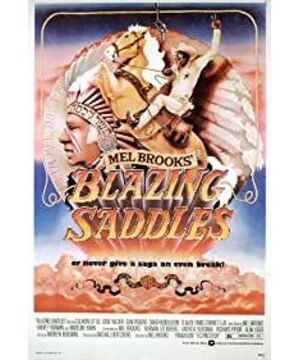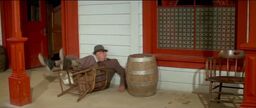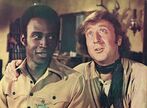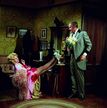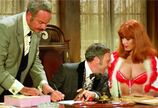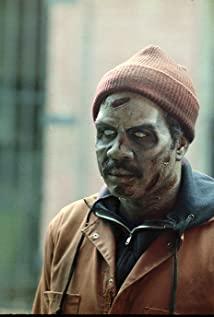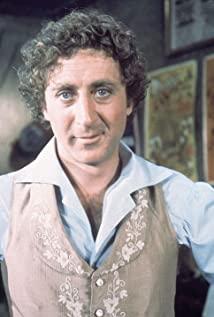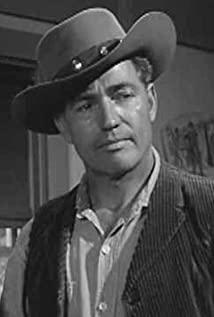You Talk To Me? !
With a "bang" gunshot, the audience screamed and got up and got under the chairs. But... nothing happened next. Everyone stood up and suddenly realized that it was the screen shot of the gangster facing the camera that confused them.
This is a scene that happened at the end of Edwin Bout’s famous movie "The Train Robbery" in 1903. Perhaps, at the time, Bout designed such a design purely to increase visual stimulation. He did not realize the revolutionary significance of this lens. The film is no longer a closed system. Crossing the screen, the characters and audience in the film really begin. "dialogue". You can never look at the lens that
does not exist
. This is usually the first sentence the teacher tells you in the acting class. Why? Because the audience will find that you are performing and will be aware of the presence of the camera.
In the golden age of Hollywood, this is definitely a taboo. You must know that "watching a movie" means giving up oneself and consciously indulging in dreams-this is exactly what the "Dream Factory" Hollywood expects. Therefore, they cannot allow any slight flaw to expose the "dream" lie. As a result, the strict "three-in-oneness" became a must rule for movies at the time: closed narrative, clear time logic, and omniscient perspective. They also invented the insurmountable axis rule, using their best efforts to keep the audience from wondering about the reality in the movie. Of course, there is the most important one: never look into the camera, never talk to the camera.
How about the opposite? Just like the voyeur discovered by the voyeur, the audience will be ashamed; they will be aware of the embarrassment of their third party; the characters on the screen may even form a condescending sense of oppression to the audience; or turn you into Allies of the conspiracy. As a result, the sense of pleasure disappeared and the dream was broken. Mayor Bart, the
play audience,
tricked everyone into getting out with a "double reed show". He said smugly, "Oh, baby, you are such a genius," and then he looked straight into the camera, "but They are all idiots."
-"The Scorching Saddle"
For comedy, the audience’s reaction is more important than anything, so the performer needs an imaginary audience hidden behind the camera (of course, it’s okay to tease them occasionally). It is not difficult to understand why the bold practice of breaking the "fourth wall" first occurred in such a non-serious field.
This kind of "dialogue" scene first occurred in the comedy of the Max Brothers in the 1930s, and was later carried forward by the more subversive Mel Brooks. However, what really defines "dialogue" as a feature of postmodern movies is Woody Allen's "Anne Hall" and John Hughes's "Spring Is Not a Reading Day". In the movie, Woody Allen will jump out of the story from time to time, face the camera and talk about his philosophy of life. From childhood shadows, midlife crisis to Fellini's movies, there is a lack of cohesion; bad children who play truant even more. It is touting the insight of "Life is in a hurry, there is no need to waste time in school"-the performer seems to know that the audience will appreciate their sense of humor.
After experiencing the baptism of the postmodern era, facing the camera and babbling and talking, it has become a "conventional" method to tease the audience and the film itself.
"The Simpsons", Homer Simpson pointed to the audience and said: People who go to the cinema to watch this film are all big fools, especially you!
In "Monkey Python and the Holy Grail", the actor even jumped out of the plot to face the audience and said, "Do you think this scene will be deleted? We are so worried about the boy who wrote this scene, but now we are very happy. The previous one is much better, at least I think so..."
Ben Affleck stared at the audience and asked, "Who would pay to watch such a movie?!" The
witness, Or the guilty ally
"The secret agreement between the audience and the actor was broken," when Erbier Anderson "fixed her eyes on the camera, her joyful eyes were covered in panic, and she regarded the audience as a witness, contemptuously Looking at the hell she chose as opposed to daylight, this shot is the saddest shot in the history of film."
-Godard's film review on "Monica"
This is perhaps the most shocking gaze in the history of film. At the end of the filming of "Monica", Ingmar Bergman suddenly decided to insert such a scene: Monica was sitting in a coffee shop, and a man graciously lit a cigarette for her, gently with his hand. Stroking her chin, and she slowly turned her head, looking sadly into the camera... This is a bold and too abrupt shot, which goes against the tone of the movie and will inevitably bring viewers a commotion. But Bergman did so stubbornly. Through "gazing," he threw the moral and emotional dilemma of the characters-including himself (as a husband but in love with the heroine)-to the audience.
As a result, we can no longer hide behind the camera with peace of mind. We are forced to share the experience and emotions of the protagonist, and a more intimate connection will inevitably be formed. That’s why the minutes-long monologue in "JCVD" by Shanger Wonton is so touching; therefore, we are so impressed by Herzog’s masterpiece "Aguirre, God’s Wrath" that the tormenting madness There is a heart-wrenching touch...Of course, this connection may also make us criminal accomplices. In Michael Haneke's "Fun Game", the audience is almost treated as the partner of the murderer, and the gaze rushes out of the camera. Contains showing off, being proud, and relaxing and naughty when facing the same kind!
What’s interesting is that when subversion has become the norm nowadays, pseudo-documentary films and dramas like "The Office" have sprung up. Actors deliberately peek at the camera during performances, and generally speak in front of the camera during interviews—breaking false tactics. It is used to create another new kind of falsehood.
View more about Blazing Saddles reviews


